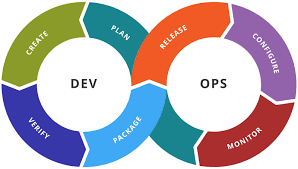The intersection of Artificial Intelligence (AI), cloud computing, and DevOps has revolutionized the way we build and deploy software applications. Cloud platforms like AWS and GCP offer a robust infrastructure and a suite of AI/ML services to accelerate development and deployment. This white paper explores how cloud DevOps practices can be leveraged to build scalable, reliable, and efficient AI-powered SaaS applications on these platforms.
White Paper: Leveraging AWS, GCP, and Cloud DevOps for AI-Powered SaaS Applications
Introduction
The intersection of Artificial Intelligence (AI), cloud computing, and DevOps has revolutionized the way we build and deploy software applications. Cloud platforms like AWS and GCP offer a robust infrastructure and a suite of AI/ML services to accelerate development and deployment. This white paper explores how cloud DevOps practices can be leveraged to build scalable, reliable, and efficient AI-powered SaaS applications on these platforms.
Understanding the Synergy
- Cloud Computing: Provides scalable and cost-effective infrastructure for AI applications.
- AI/ML Services: Offers pre-trained models and APIs for tasks like computer vision, natural language processing, and machine learning.
- DevOps: Enables rapid development, deployment, and continuous delivery of AI applications.
Key Considerations for AI SaaS Applications
- Data Strategy:
- Data Ingestion: Efficiently ingest and process large volumes of data from various sources.
- Data Storage: Choose appropriate storage solutions (e.g., S3, BigQuery) based on data volume, access patterns, and cost considerations.
- Data Preparation and Cleaning: Implement data cleaning, preprocessing, and feature engineering techniques.
- Data Security and Privacy: Ensure data privacy and security compliance with industry standards (e.g., GDPR, HIPAA).
- Model Development and Training:
- Model Selection: Choose the appropriate AI/ML models (e.g., neural networks, decision trees, random forests) for your specific use case.
- Model Training: Utilize cloud-based computing resources (e.g., EC2, Compute Engine) to train models efficiently.
- Hyperparameter Tuning: Optimize model performance by tuning hyperparameters.
- Model Deployment: Deploy trained models to production environments using platforms like TensorFlow Serving or MLflow.
- Infrastructure and Platform:
- Serverless Computing: Leverage serverless functions (e.g., AWS Lambda, Google Cloud Functions) for event-driven and scalable applications.
- Containerization: Use containers (e.g., Docker) to package and deploy applications consistently across different environments.
- Container Orchestration: Manage containerized applications using Kubernetes or similar tools.
- CI/CD Pipelines: Automate the build, test, and deployment processes.
- Monitoring and Management:
- Performance Monitoring: Monitor application performance metrics (e.g., CPU usage, memory utilization, latency).
- Error Logging and Alerting: Set up robust logging and alerting systems to detect and resolve issues promptly.
- Scalability: Design your application to scale horizontally to handle increasing workloads.
- Security: Implement security best practices, including access control, encryption, and vulnerability scanning.
Leveraging Cloud DevOps Practices
- Infrastructure as Code (IaC): Use tools like Terraform or CloudFormation to automate infrastructure provisioning.
- Continuous Integration and Continuous Delivery (CI/CD): Automate the build, test, and deployment process.
- Version Control: Use Git to manage code and configuration changes.
- Monitoring and Logging: Implement comprehensive monitoring and logging to track application performance and identify issues.
Conclusion
By effectively leveraging cloud platforms like AWS and GCP, and by adopting DevOps practices, organizations can build and deploy highly scalable, reliable, and intelligent AI-powered SaaS applications. By understanding the key considerations and best practices outlined in this white paper, you can accelerate your development process and deliver innovative solutions to your users.
References:
- O'Reilly Media: A leading publisher of technical books and online learning resources.
- Packt Publishing: A publisher of books, videos, and online courses on technology and software development.
- AWS Documentation: Official documentation for Amazon Web Services.
- Google Cloud Platform Documentation: Official documentation for Google Cloud Platform.
- Kubernetes Documentation: Official documentation for Kubernetes.
- TensorFlow: https://www.tensorflow.org/
- PyTorch: https://pytorch.org/
- Scikit-learn: https://scikit-learn.org/1
Additional Tips:
- Stay Updated: Keep up with the latest trends and technologies in the cloud and AI/ML domains.
- Experiment and Innovate: Don't be afraid to try new things and experiment with different approaches.
- Collaborate with Experts: Seek advice from experienced cloud architects and data scientists.
- Prioritize Security: Implement robust security measures to protect your applications and data.
- Continuously Monitor and Optimize: Regularly monitor your applications and make necessary optimizations.
By following these guidelines and leveraging the power of cloud platforms and DevOps practices, you can build successful AI-powered SaaS applications that deliver value to your users. Contact keencomputer.com for details.
